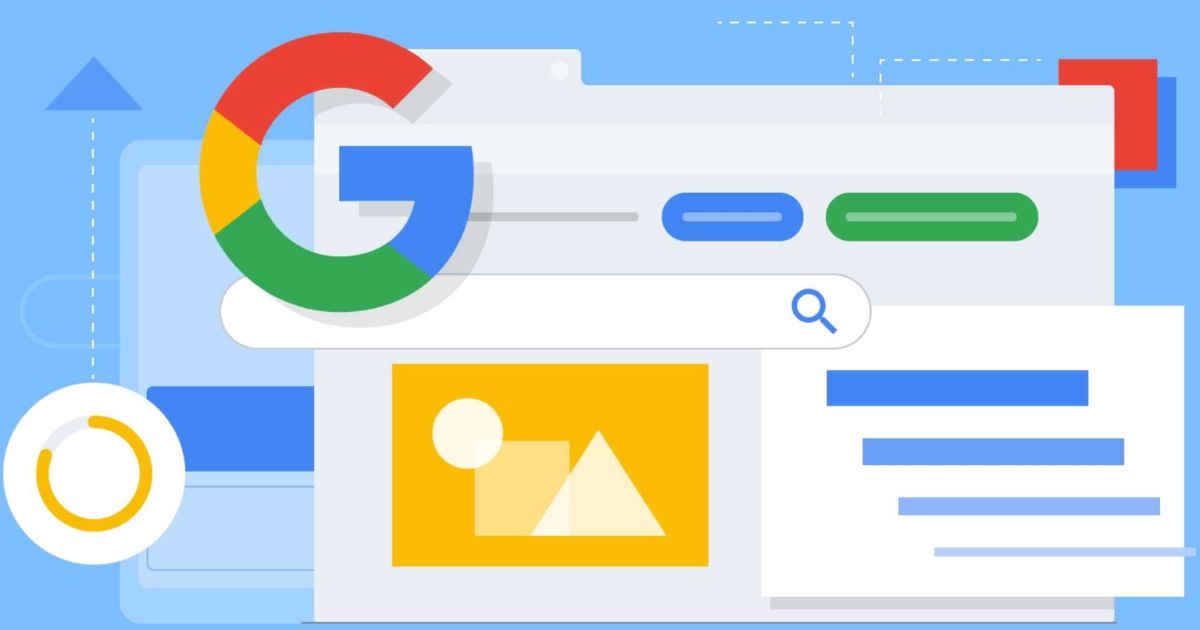In today’s digital landscape, securing a spot on the first page of Google Search results is like striking gold. It’s the Holy Grail of online visibility, and mastering this art can be the difference between a thriving business and one that’s lost in the vast sea of the internet.
Enter David Aziz, a seasoned SEO guru who’s cracked the code on how to get on the first page of Google. His strategies have helped countless businesses skyrocket their online presence, and today, we’re diving deep into his proven methods.
Understanding the Importance of Google’s First Page
Let’s face it – when was the last time you ventured beyond the first page of Google results? Probably not recently. That’s because the first page is where the action happens. Studies show that over 75% of users never scroll past it. This means if you’re not there, you’re practically invisible online. David Aziz emphasizes that landing on this coveted real estate isn’t just about vanity; it’s about survival in the digital age.
Being on the first page isn’t just good for clicks; it’s a game-changer for brand credibility. When your website pops up alongside industry giants, it subconsciously signals to users that you’re a trustworthy, authoritative source. This is why David Aziz’s SEO strategy focuses not just on rankings, but on building a robust online presence that Google and users alike can’t ignore.
Who Is David Aziz?
Before we dive into the nitty-gritty, let’s get to know the man behind the methods. David Aziz isn’t your average SEO consultant. With over a decade of experience in digital marketing, he’s seen Google’s algorithms evolve and has consistently stayed ahead of the curve. His track record speaks volumes – from helping local mom-and-pop shops outrank big-box stores to propelling startups to industry leadership positions in search results.
What sets David apart is his holistic approach to Search Engine Optimization. He doesn’t believe in quick fixes or black hat techniques. Instead, his philosophy centers on creating value for users while playing by Google’s rules. It’s this user-first mentality that’s earned him a reputation as one of the most reliable voices in SEO.
David Aziz’s Approach to Google Rankings

At the heart of David Aziz’s SEO strategy is a comprehensive framework that addresses every aspect of search engine optimization. He believes that true SEO success comes from a perfect blend of technical expertise, creative content creation, and strategic relationship building. Let’s break down the key pillars of his methodology:
- Keyword Research: The foundation of any successful SEO campaign.
- On-Page SEO Techniques: Optimizing your website’s content and structure.
- High-Quality Content Creation: Producing valuable, engaging content that users and Google love.
- Technical SEO: Ensuring your website is crawlable and indexable.
- Building High-Quality Backlinks: Earning authoritative links to boost your site’s credibility.
- Mobile Optimization: Catering to the growing mobile user base.
- Continuous monitoring and adaptation: Staying ahead of algorithm changes.
David’s approach is not about gaming the system but about creating a sustainable online presence that naturally attracts both users and search engines.
Step 1: Conduct Thorough Keyword Research
Keyword research is where the magic begins, according to David. It’s not just about finding popular terms; it’s about uncovering the golden nuggets that your competitors have overlooked. David recommends using a combination of tools like SEMrush, Ahrefs, and Google’s Keyword Planner to cast a wide net.
But here’s where David’s strategy differs: he doesn’t just look at search volume. He dives deep into user intent, analyzing the types of content that currently rank for these keywords. This allows him to identify gaps in the market where creating superior content can lead to quick wins.
Uncovering User Intent Behind Keywords
Understanding user intent is crucial. Are they looking to buy, learn, or compare? David teaches his clients to categorize keywords into:
- Informational (e.g., “how to optimize a website”)
- Navigational (e.g., “David Aziz SEO blog”)
- Transactional (e.g., “buy SEO services”)
- Commercial investigation (e.g., “best SEO tools 2024”)
By aligning content with these intents, you’re more likely to satisfy both users and Google’s algorithms.
Step 2: Optimize Your Content for SEO
Once you’ve got your keyword targets, it’s time to create content that shines. David Aziz’s on-page SEO techniques are both an art and a science. He stresses the importance of naturally incorporating keywords into your content, titles, headers, and meta descriptions. But it’s not just about keyword stuffing – far from it.
David’s content optimization checklist includes:
- Crafting compelling, keyword-rich titles (under 60 characters)
- Writing meta descriptions that act as mini-ads for your content
- Using header tags (H1, H2, H3) to structure content logically
- Incorporating relevant images with optimized alt text
- Ensuring content is comprehensive, covering topics in-depth
But perhaps most importantly, David emphasizes creating content that truly adds value. “Google’s getting smarter every day,” he often says. “You can’t trick it with fluff. You need to be the best answer to the user’s query.”
Read Also More: How Nasdaq FintechZoom is Revolutionizing Finance – Exclusive Insights
Crafting Compelling Meta Descriptions and Title Tags
Your title tag and meta description are your first impression in search results. David shares a formula for irresistible titles:
Copy
[Keyword] + [Benefit] + [Year/Urgency]
For example: “SEO Strategy 2024: Boost Your Rankings Fast with Expert Tips”
As for meta descriptions, David recommends including a clear value proposition and a call-to-action. Keep it under 160 characters to avoid truncation in search results.
Step 3: Build High-Quality Backlinks
In the world of SEO, backlinks are like votes of confidence. The more high-quality sites that link to you, the more Google trusts you. But building high-quality backlinks isn’t about quantity – it’s about quality and relevance.
David’s link-building strategies focus on earning links rather than building them artificially. Some of his favorite techniques include:
- Creating shareable, data-driven content (like industry surveys or original research)
- Guest posting on reputable industry blogs
- Leveraging broken link building by finding dead links on authoritative sites and offering your content as a replacement
- Participating in industry events and getting mentioned in event recaps
- Creating tools or resources that naturally attract links
David warns against buying links or participating in link schemes. “It’s not worth the risk,” he cautions. “One penalty from Google can undo years of hard work.”
Leveraging Content Marketing for Natural Link Acquisition
Content marketing is a powerful tool for attracting backlinks naturally. David advises creating “linkable assets” – pieces of content so valuable that people can’t help but share them. This could be:
- Comprehensive guides or whitepapers
- Infographics that visualize complex data
- Interactive tools or calculators
- Video tutorials or webinars
By consistently producing high-quality, shareable content, you’ll build a repository of resources that naturally attract links over time.
Step 4: Focus on User Experience
In recent years, Google has placed increasing importance on user experience (UX) as a ranking factor. David Aziz’s SEO strategy heavily emphasizes creating websites that are not just optimized for search engines, but are a joy for users to navigate.
Key aspects of UX that David focuses on include:
- Website speed: Using tools like Google PageSpeed Insights to identify and fix slow-loading elements
- Mobile responsiveness: Ensuring your site looks and functions perfectly on all devices
- Intuitive navigation: Creating a logical site structure that helps users find what they need
- Readability: Using clear fonts, proper spacing, and breaking up text with subheadings and images
- Engagement: Incorporating interactive elements that keep users on your site longer
David often says, “A fast, user-friendly site is like a welcoming storefront. It invites people in and makes them want to stay.”
Enhancing Site Architecture for Better Crawlability
A well-structured website isn’t just good for users; it helps search engines understand and index your content more effectively. David recommends:
- Creating a clear hierarchy of pages
- Using breadcrumbs to show page relationships
- Implementing a logical URL structure (e.g., example.com/category/subcategory/page-name)
- Utilizing internal linking to distribute link equity and guide users through your site
By focusing on these technical aspects, you’re making it easier for Google to crawl and understand your site, which can lead to better rankings.
Step 5: Monitor and Adjust Your Strategy
SEO isn’t a “set it and forget it” endeavor. The digital landscape is constantly evolving, and so should your strategy. David emphasizes the importance of continuous monitoring and adaptation.
Some key metrics David advises tracking include:
- Organic traffic (overall and page-specific)
- Keyword rankings
- Bounce rate and time on site
- Page load times
- Backlink profile growth and quality
He recommends using tools like Google Analytics, Google Search Console, and professional SEO software to keep a pulse on your site’s performance.
David’s mantra is “Test, learn, and iterate.” He encourages running A/B tests on titles, content structures, and site layouts to see what resonates best with your audience and search engines.
Case Studies: Success Stories with David Aziz’s Techniques
To illustrate the effectiveness of his methods, let’s look at two case studies from David’s portfolio:
- Local Plumbing Company: By optimizing for local SEO and creating comprehensive guides on common plumbing issues, this company went from page 5 to the top 3 results for competitive terms like “emergency plumber [city name]” in just 4 months. Their organic traffic increased by 300%, leading to a 150% boost in service calls.
- E-commerce Startup: A new online retailer in the pet supplies niche used David’s content strategy to create in-depth product comparisons and care guides. Combined with technical SEO improvements and a targeted link-building campaign, they saw a 500% increase in organic traffic over 6 months and outranked established competitors for high-value product keywords.
These success stories underscore the power of David’s comprehensive approach to SEO.
Common Pitfalls to Avoid
While following David’s strategies can lead to SEO success, he also warns of common mistakes that can harm your Google rankings:
- Keyword stuffing: Overusing keywords in an unnatural way
- Duplicate content: Publishing the same content across multiple pages or websites
- Ignoring mobile users: Not having a mobile-responsive site
- Slow page speed: Failing to optimize images and scripts for fast loading
- Poor quality backlinks: Engaging in link farms or buying low-quality links
- Neglecting local SEO: For businesses with physical locations, not optimizing for local search
- Inconsistent NAP: Having different business name, address, and phone number across the web
David stresses that avoiding these pitfalls is just as important as implementing positive strategies.
Conclusion: Achieving First-Page Success with David Aziz
Ranking on the first page of Google isn’t just about implementing a few tricks; it’s about creating a comprehensive online presence that provides real value to users. David Aziz’s strategies focus on building a strong foundation of quality content, technical excellence, and strategic promotion.
To recap, the key elements of David’s SEO success formula are:
- Thorough keyword research aligned with user intent
- Creating high-quality, optimized content
- Building a robust, natural backlink profile
- Focusing on user experience and technical SEO
- Continuous monitoring and adaptation












